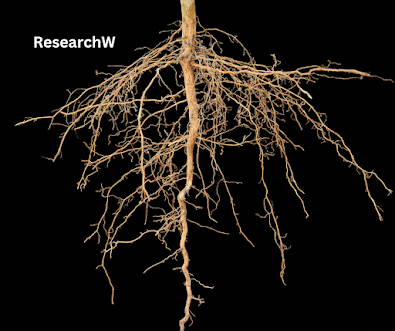Root rot is a plant disease caused by various fungi, and it primarily affects the roots of plants. It is a common problem in both indoor and outdoor plants and can lead to significant damage or even death of the affected plants if not addressed promptly. Here are some key points about root rot:
Fungal Causes: Root rot is typically caused by various soil-borne fungi, with the most common being species from the genera Phytophthora, Rhizoctonia, and Fusarium. These fungi thrive in wet and poorly drained soil conditions.
Symptoms: The symptoms of root rot can vary depending on the plant species and the severity of the infection. Common symptoms include wilting, yellowing of leaves, stunted growth, and a general decline in the health of the plant. As the disease progresses, the roots become discolored, mushy, and eventually decay.
Environmental Factors: Root rot is often triggered by excessively wet or poorly drained soil. Overwatering, heavy rainfall, or inadequate soil drainage can create conditions favorable for the growth and spread of the root rot fungi.
Prevention: Preventing root rot is typically more effective than trying to treat an infected plant. To prevent root rot:Ensure proper soil drainage by using well-draining potting mix or amending garden soil with organic matter.
Avoid overwatering. Allow the top inch or two of soil to dry out between waterings.
Provide good air circulation around the plant, as stagnant air can promote fungal growth.
Choose plants that are resistant to root rot if you have a history of the disease in your garden.
#RootRot
#PlantDiseases
#GardenProblems
#PlantCare
#GardenHealth
Nomination Link: https://x-i.me/nomd1

No comments:
Post a Comment